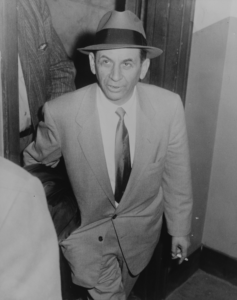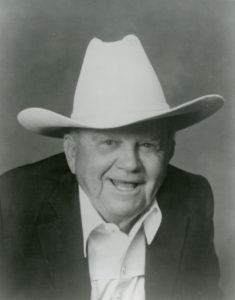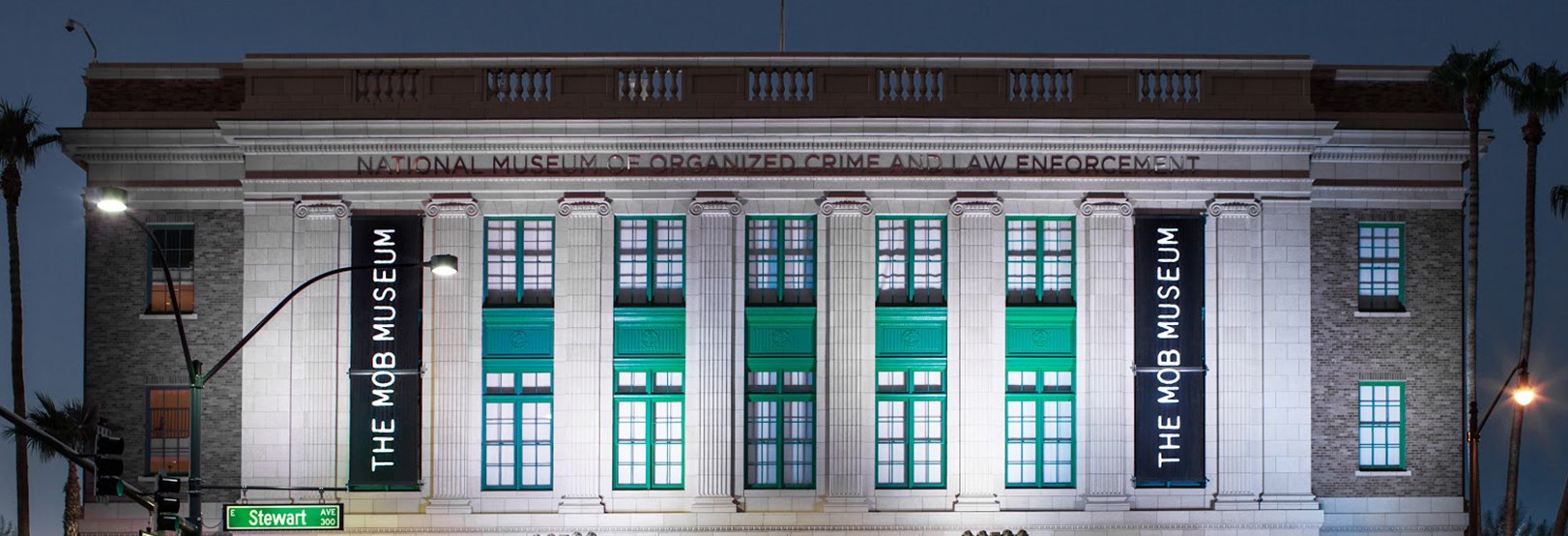
Las Vegas Mob stories attract Hollywood interest
New movies, TV series to focus on underworld figures associated with Southern Nevada

Of the many Mob movies and television shows now in the works, several are focused on underworld figures who had an impact on Las Vegas. Meyer Lansky, Benny Binion and Tony Spilotro — all at the center of projects in the early stages — played significant roles in Southern Nevada’s organized crime history.
For moviemakers, Las Vegas’ appeal at least as a partial setting did not begin in the 1970s with The Godfather’s Corleone family and its financial interest in the Nevada gambling industry. Decades earlier, film noir directors used Las Vegas and its 1940s and ’50s casino culture in crime capers characteristic of that dark genre. Among these are 1949’s The Lady Gambles with Barbara Stanwyck and the 1952 Howard Hughes film The Las Vegas Story, starring Jane Russell.
Through the years, many more films, including heist movies such as the 1960 Rat Pack picture Ocean’s Eleven and the later version with George Clooney, Brad Pitt and others, capitalized on the city’s glamour and get-rich appeal.
This fascination with Las Vegas, and with the Mob in general, is going strong. The upcoming Lansky movie, which is set to begin production in August, will star Harvey Keitel as the powerful East Coast racketeer who had a hand in casinos across the country, including Las Vegas and Cuba.

According to Variety magazine, the movie will center on “an aging Lansky living in anonymity in Miami Beach after being investigated and pursued for decades by the FBI.”
While it is unclear whether the movie will delve deeply into Las Vegas, Lansky, who lived in the Miami area for years, benefited financially from Nevada casinos. For instance, an underworld courier named Ida Hoopes Devine sometimes delivered skimmed gambling revenue from the Fremont hotel-casino in downtown Las Vegas to Lansky in South Florida. Even if the movie does not give much play to Lansky’s Las Vegas connections, the film is likely to revive interest in his involvement in the city several decades before his death in 1983.
Meanwhile, Binion and Spilotro were much more visible around town as the area grew.
A former Texas gambler, Binion, whose Horseshoe hotel-casino in Glitter Gulch was home to the World Series of Poker, had a deadly Wild West reputation and headline-making family that kept his name in the news even after he died in 1989. Now, a television series is being scripted based on journalist Doug Swanson’s 2014 book Blood Aces: The Wild Ride of Benny Binion, The Texas Gangster Who Created Vegas Poker.
Spilotro, the Chicago Outfit’s enforcer in Las Vegas beginning in the early 1970s, was killed in Illinois with his brother in a 1986 Mob beating and buried with him in an Indiana cornfield. Earlier, Tony Spilotro’s high-profile romance with the wife of Frank “Lefty” Rosenthal, a bookmaker who ran the now-demolished Stardust hotel-casino for the Mob on the Las Vegas Strip, was fictionalized in the 1995 movie Casino. In that movie, Joe Pesci portrays the character based on Spilotro. Characters based on Lansky and the Binion family also have popped up in previous productions.
A new feature film focusing on Spilotro, The Legitimate Wiseguy, will be directed by Roland Joffé, an Academy Award nominee who directed The Killing Fields and The Mission in the 1980s. According to the film industry website Deadline Hollywood, this Spilotro project will look at how he helped Nicholas Celozzi, the grand nephew of former Chicago mobster Sam Giancana, to land acting roles in Hollywood. After the movie is cast and fully financed, it will include Las Vegas as one of its settings, the website says.
Hollywood’s interest in mobsters, and in Las Vegas itself, occurs partly because these are “subjects that people can easily grasp and relate to,” according to Michael Green, a University of Nevada, Las Vegas associate professor of history.
“Plenty of cities and groups in the U.S. have been important historically and remain so, but they don’t excite interest,” Green, a member of The Mob Museum board of directors, said in an email. “I would say the Constitutional Convention is more important historically, and some of the Founding Fathers were real characters in their own right, but how many movies depict what they did in Philadelphia, and how much would moviegoers want to listen to discussions of political theory?”
In simple terms, Green, an author whose books include Nevada: A History of the Silver State, said the Mob and Las Vegas just are interesting. “The Mob is a soap opera in so many ways, and Las Vegas has glitter,” he said.
Swanson, a novelist and former newspaper reporter in Dallas, attributes the public’s fascination with the Mob to the “narrative dynamic.”
“These books and movies have the elements of a great story — conflict, character and setting,” he said in an email. “The gangsters in successful books and movies tend to be complex and charismatic. James Cagney’s Cody Jarrett in White Heat is a great example. The Corleones are probably the best example. I take that back — Tony Soprano is probably the best example. Throw in a great setting, like Las Vegas or New York, and you have it all.”

Las Vegas has remained popular with the movie-going public “because it maintained and marketed the fantasy that the common tourist could practically rub shoulders with mobsters simply by walking into a casino,” said Swanson, who now teaches fiction and nonfiction at the University of Pittsburgh.
“And like New York, it could be visually stunning on film,” he said of Las Vegas.
But what about stereotypes regarding Las Vegas and mobsters? Critics have contended that some Mob movies either glorify criminals or present them as caricatures. As a city, Las Vegas also is often narrowly defined in movies.
While misperceptions exist, they can be difficult to clear up on the screen in a short time frame, Green said.
“A film about Tony Spilotro might not correctly convey both the honor and corruption of law enforcement, or how the depth of his involvement in street crime in Las Vegas marked a departure for the Mob, which previously had concentrated so heavily upon the casino skim,” he said, “or to combine Benny Binion as what he was: a highly innovative, shrewd businessman, but, as the evidence suggests, someone who countenanced or participated in a lot of violence.”
Swanson said if the Binion project comes to fruition, he also hopes it will present “the full measure of the man.”
“I had a long talk recently with the producers about this and they seem to truly appreciate Binion’s native intelligence, his canniness, his business sense, his devotion to this family and friends, and his absolute ruthlessness,” Swanson said. “Going back to the elements of a good story, Binion is a fascinating character of many layers, and I’m confident that the guys who want to do this series understand that quite well.”
Lansky’s grandson, Meyer Lansky II, said by phone that he hopes the new project presents a well-rounded image of his grandfather, including not only his illegal activity but his business acumen.
“People are looking for something that’s real,” said Lansky II, who lives in Las Vegas.
Lansky II markets a line of Meyer Lansky apparel, and is active on social media sites, including his Instagram page, Meyer Lansky Legacy. He also is working on a book based on 400 of his grandfather’s letters that he possesses. The book tentatively is titled Meyer Lansky’s Top 10 Guide to Running A Killer Business.
Lansky II said the earlier mobsters involved in Las Vegas casinos on the inside, including his grandfather, remain a big part of the city’s legacy. People from around the globe are aware of the area’s decades-long Mob lore, he said. “Everybody knows Las Vegas,” Lansky II said.
Larry Henry is a veteran print and broadcast journalist. He served as press secretary for Nevada Governor Bob Miller, and was political editor at the Las Vegas Sun and managing editor at KFSM-TV, the CBS affiliate in Northwest Arkansas. Henry taught journalism at Haas Hall Academy in Bentonville, Arkansas, and now is the headmaster at the school’s campus in Rogers, Arkansas. The Mob in Pop Culture blog appears monthly.
Feedback or questions? Email blog@themobmuseum.org





